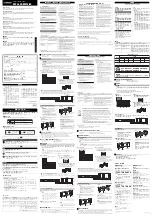
The Dell-extended Active Directory Users and Computers Snap-In checks the mode and limits users in order to create objects across
domains, if in a mixed mode.
Does using CMC with Active Directory support multiple domain environments?
Yes. The domain forest function level must be in Native mode or Windows 2003 mode. In addition, the groups among Association
Object, RAC user objects, and RAC Device Objects (including Association Object) must be universal groups.
Can these Dell-extended objects (Dell Association Object, Dell RAC Device, and Dell Privilege Object) be in different domains?
The Association Object and the Privilege Object must be in the same domain. The Dell-extended Active Directory Users and
Computers Snap-In allows to create these two objects in the same domain only. Other objects can be in different domains.
Are there any restrictions on Domain Controller SSL configuration?
Yes. All SSL certificates for Active Directory servers in the forest must be signed by the same root certificate authority-signed
certificate, because CMC only allows upload of one trusted certificate authority-signed SSL certificate.
The Web interface does not launch after a new RAC certificate is created and uploaded.
If Microsoft Certificate Services is used to generate the RAC certificate, the User Certificate option may have been used instead of
Web Certificate, when creating the certificate.
To recover, generate a CSR, create a new Web certificate from Microsoft Certificate Services, and then upload it by running the
following RACADM commands:
racadm sslcsrgen [-g] [-f {filename}]
racadm sslcertupload -t 1 -f {web_sslcert}
FlexAddress and FlexAddressPlus
What happens if a feature card is removed?
There is no visible change if a feature card is removed. Feature cards can be removed and stored, or can be left in place.
What happens if a feature card that was used in one chassis is removed and put into another chassis?
The Web interface displays the following error message:
This feature card was activated with a different chassis. It must be removed before
accessing the FlexAddress feature.
Current Chassis Service Tag = XXXXXXXX
Feature Card Chassis Service Tag = YYYYYYYY
An entry is added to the CMC log that states:
cmc <date timestamp> : feature 'FlexAddress@YYYYYYYY' not activated; chassis ID='XXXXXXXX'
What happens if the feature card is removed and a non-FlexAddress card is installed?
No activation or modifications to the card should occur. The card is ignored by CMC. In this situation, the
$racadm featurecard -s
command returns the following message:
No feature card inserted
ERROR: can't open file
If the chassis service tag is reprogrammed, what happens if there is a feature card bound to that chassis?
•
If the original feature card is present in the active CMC on that or any other chassis, the Web interface displays the following
error message:
–
This feature card was activated with a different chassis. It must be removed before
accessing the FlexAddress feature.
–
Current Chassis Service Tag = XXXXXXXX
–
Feature Card Chassis Service Tag = YYYYYYYY
The original feature card is no longer eligible for deactivation on that or any other chassis, unless Dell Service reprograms the
original chassis service tag back into a chassis, and CMC that has the original feature card is made active on that chassis.
•
The FlexAddress feature remains activated on the originally-bound chassis. The binding of that chassis feature is updated to
reflect the new service tag.
Is an error message displayed if two feature cards are installed in a redundant CMC system?
207


































